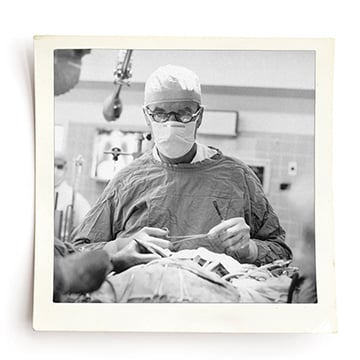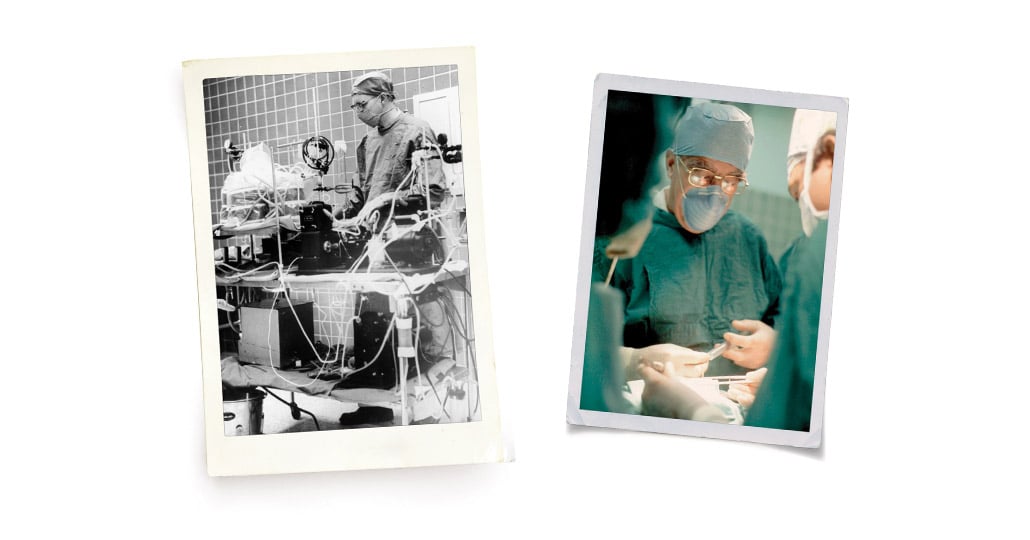A MOMENT IN TIME
A Real Heart-Stopper
By Emily Sparks
Stopped-heart surgery ushered in a new era at Cleveland Clinic in 1956. | Photo: Cleveland State University Michael Schwartz Library Special Collections
In 1956, a groundbreaking stopped-heart surgery was performed at Cleveland Clinic.

Dr. Donald Effler | Photo: Cleveland Clinic Archives
A team led by Donald Effler, MD, and Laurence Groves, MD, connected the patient — a 17-month-old boy with a ventricular septal defect, i.e. a hole in his heart — to a heart-lung machine designed by Willem Kolff, MD, PhD. Once the machine was pumping blood and oxygen throughout the body, a dose of potassium citrate temporarily paralyzed the heart.
Previously, the heart continued beating during an operation, and surgery had to be completed quickly. Stopping the heart gave surgeons more time and less taxing conditions. “With a dry, quiet, clearly visible field in which to work, we believe that a new era of heart surgery has opened,” Dr. Effler said.
According to news accounts, the young patient was “up and about” within 14 days of the surgery. It generated national media coverage.

From left: Dr. Willem Kolff with his heart-lung machine; Dr. Laurence Groves | Photo: Cleveland Clinic Archives
Drs. Effler, Groves and Kolff and cardiologist F. Mason Sones, MD, published their results in The Cleveland Clinic Quarterly. Time magazine hailed the surgery — the first in a series of such operations at Cleveland Clinic that established stopped-heart surgery as a regular practice — as a major advance, while Congresswoman Frances P. Bolton praised the new technique as part of a tradition of pioneering medical research at Cleveland Clinic. Today, the heart is routinely stopped during surgery.
